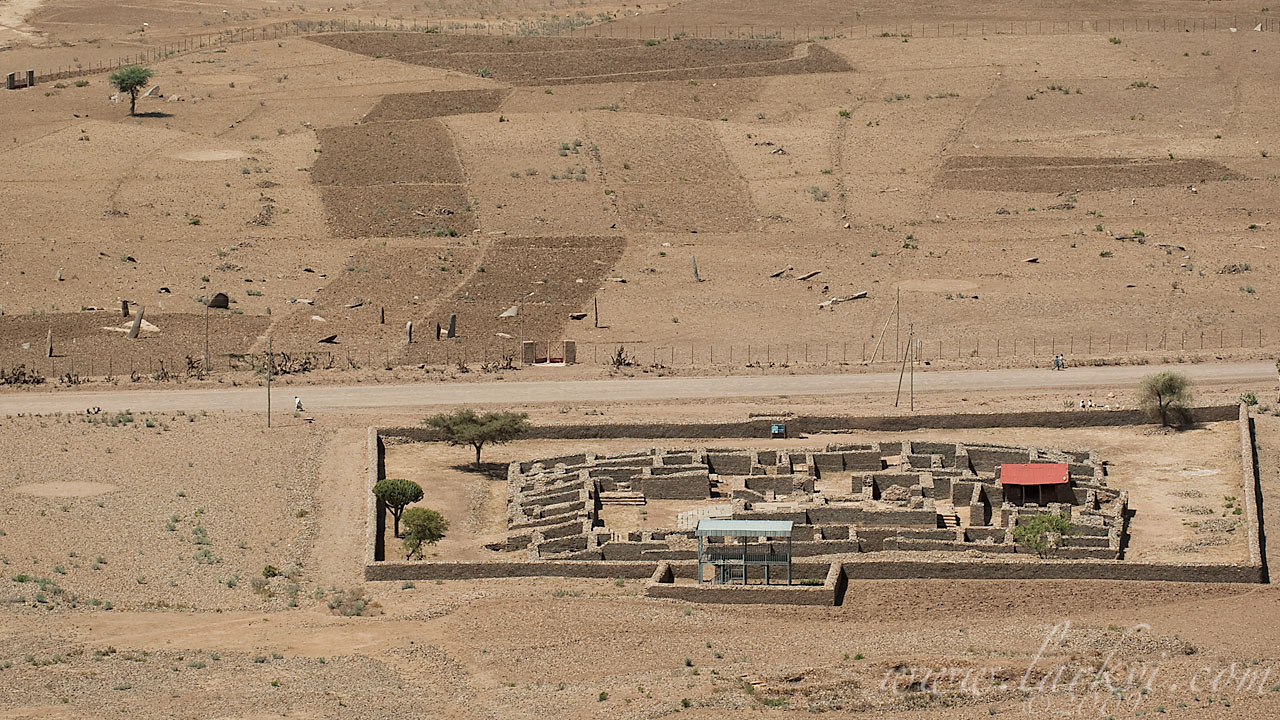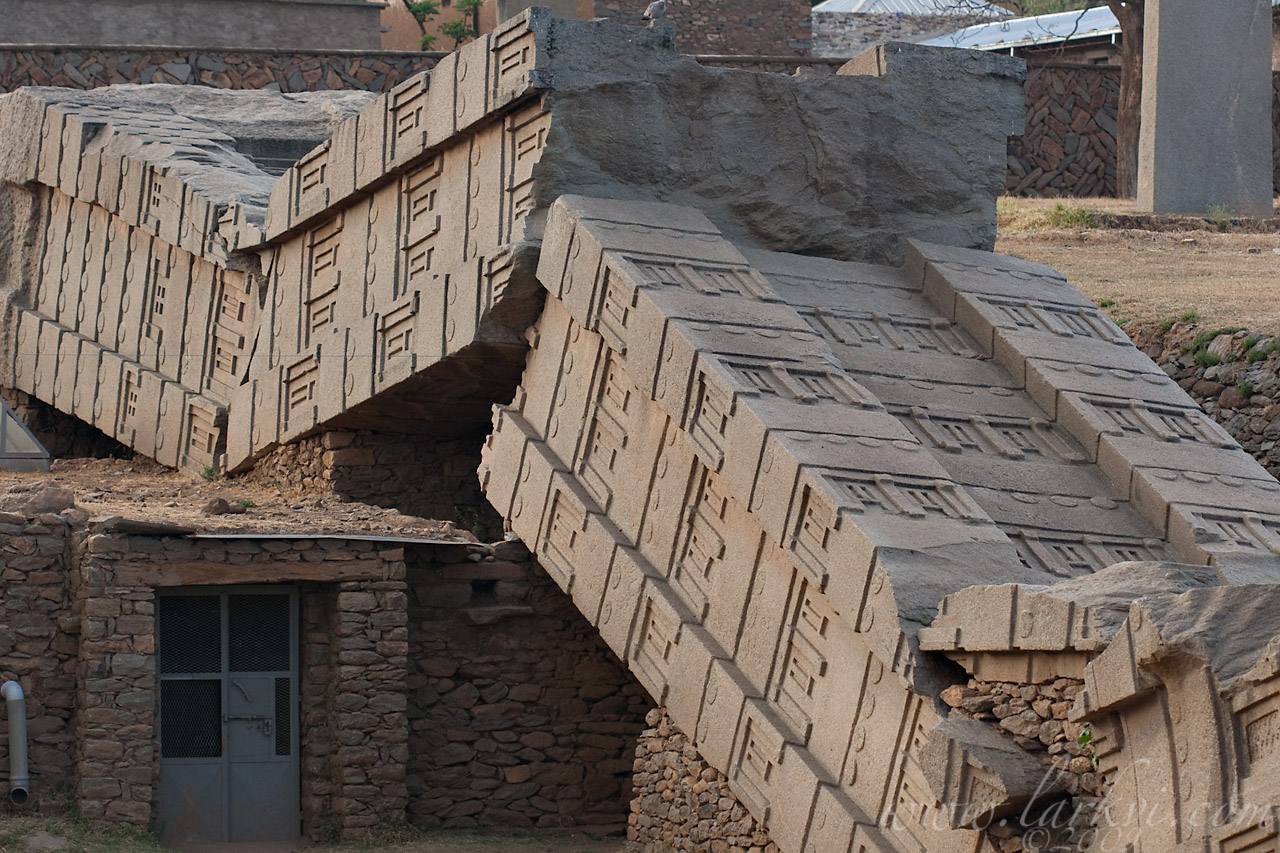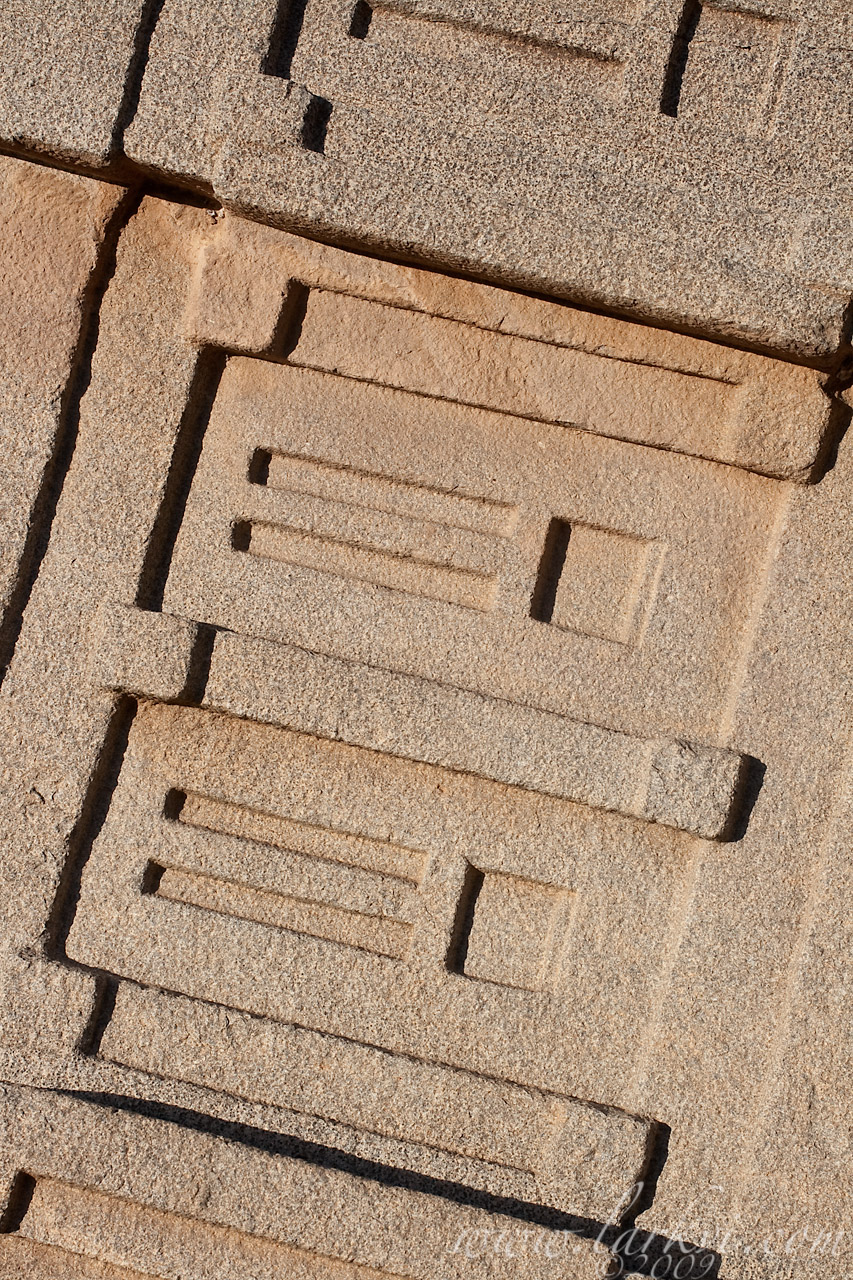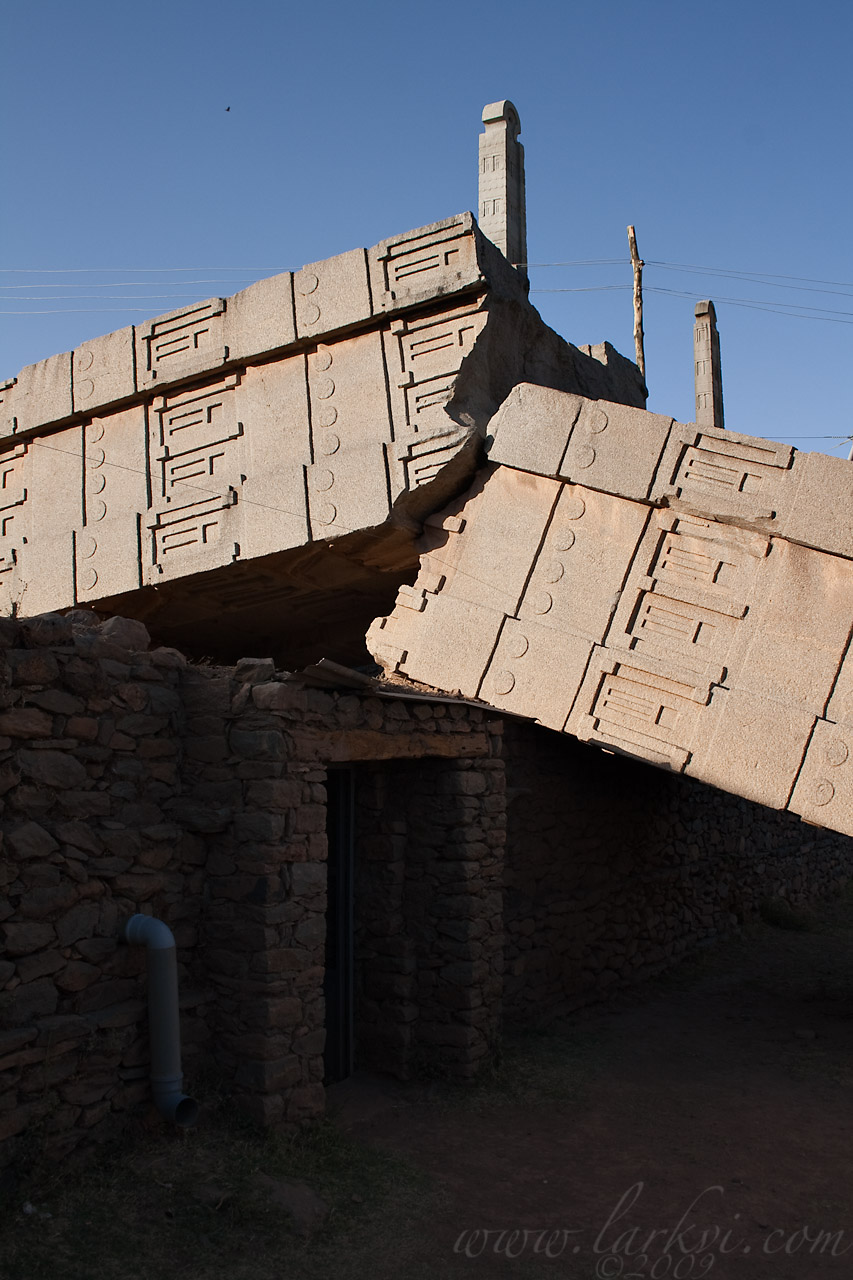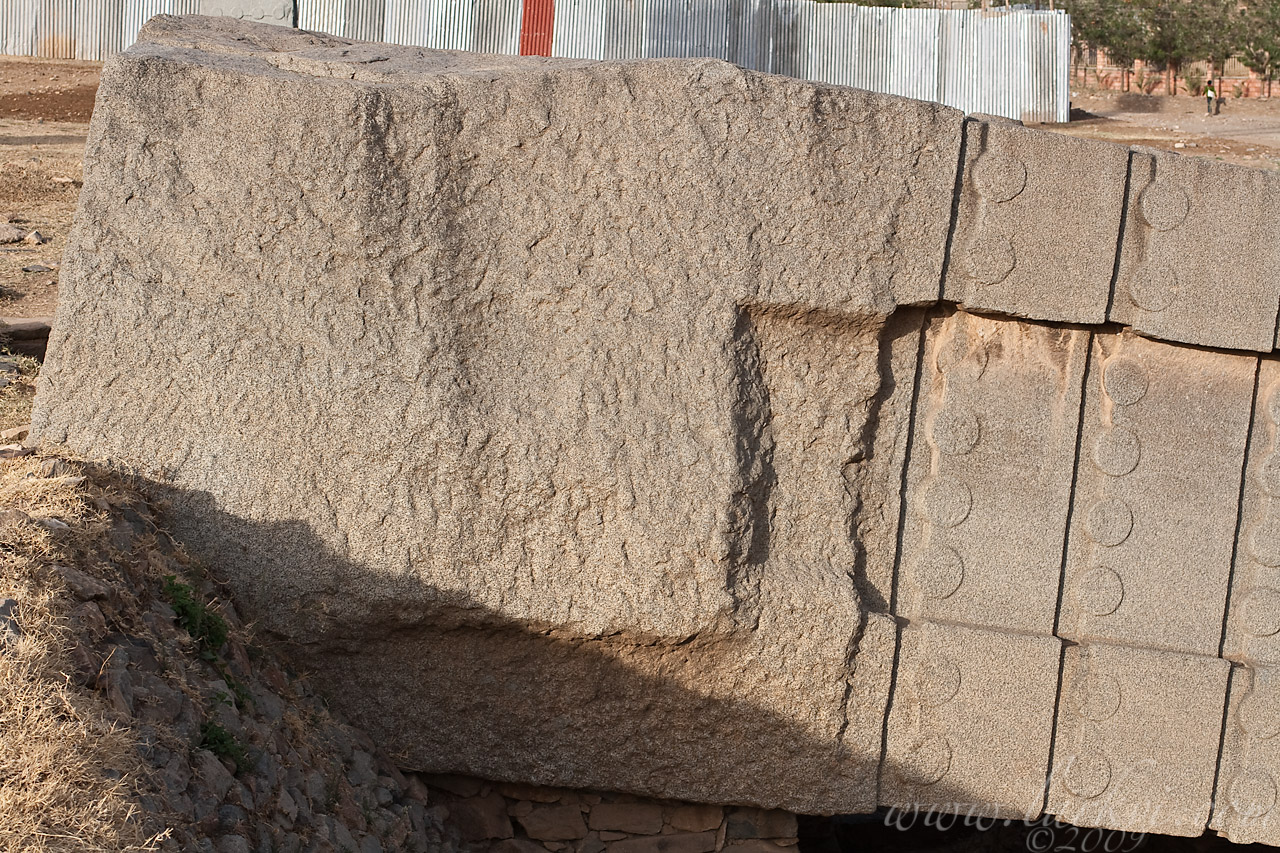Dungur, locally known as “The Queen of Sheba’s Palace,” in front of the “Gudit” Stelae Field.
Dungur is the smallest of four major ‘palace’ structures discovered in Axum. Unfortunately, the largest, the 80 x 120 m Ta’akha Maryam structure, was obliterated when the Italian occupying forces decided that they didn’t want to re-route a road around it, and built it right through the centre of the remains. The Enda Mikael and Enda Semon structures are extensively built-over by locals.
The Gudit Stelae Field is apparently lower-status graves than the other two stelae field. It maintains a lower-status even in the modern Axum–as you can see, the site is still being farmed. Only limited archaeological work has been done, with trenches dug in 1973-4 (Chittick) and 1995-6 (Phillipson).
More about both of these sites can be found in:
Phillipson, David W. (comp. and ed.). The Monuments of Aksum: an illusstrated account based on the work in A. D. 1906 of the Deutsch Aksum-Expedition by Enno Littmann, Daniel Orenker and Theodor von Lüpke (Berlin, 1913) translated by Rosalind Bedlow and including previously unpublished photographs from the Staatsbibliothek zu Berlin. Addis Ababa: A. A. U. Press and The British Institute in Eastern Africa, 1997.
for a glossier version of the same, see:
Phillipson, David W. Ancient Ethiopia: Aksum: its Antecedents and its Successors. London: British Museum, 1998.

